A Precipice and a Black Tsunami
One hundred sixty-seven miles without a gas station. A comparatively short haul (for the day) out of Ely took us about 100 miles southeast on US6. We were a little surprised to find Black Rock Junction no longer supplying gasoline. There is little or no highway signage notifying the motorist that 167 miles of US6 have no services whatsoever. Gas up in Ely or in Tonopah, or side-track to Lund, those are the choices. We encounter this repeatedly in our travels; once-prosperous way-stations closed up, faded, hollow and gaunt.
Out on US6, there is little sign of civilization beyond the road itself. The desert stretches out in all directions. Although we know that it is mined, ranched, and criss-crossed with tiny dirt access roads, we still enjoy the appearance of a “pristine” area. Stamped with the print of mankind even as we know it is, it is still very, very original. There is a space about it that only the desert can provide.
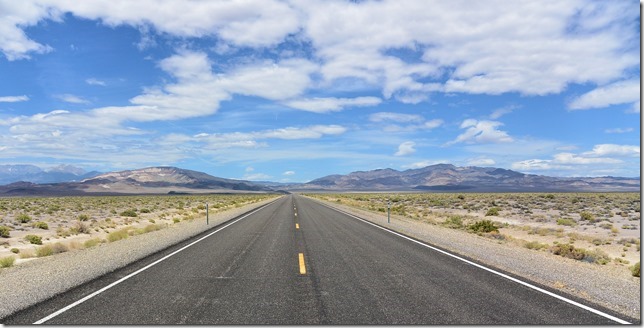
This is an extremely isolated, remote, and beautiful part of Nevada. This time of year, after the Spring rains, the desert has some “greenth” to it, mitigating the harshness of the drier seasons. Wildflowers of all colors are everywhere, sometimes in profusion. Oranges, yellows, blues, purples, reds and roses all donate their hints and splashes across the landscape. The colors are subtle, at times almost subliminal. They can be photographed close-up, but they disappear from the camera’s eye in the wide-angle view. The skies, as they have done so often on this trip, cooperate with the camera delightfully.
We arrived at our destination, Lunar Crater Natural Landmark. Words don’t do well on this one, check out the pictures. Howie is parked about 50 feet from a 500-foot drop to the crater floor. First view from inside the coach, second from 1/3 of the way around the crater rim.
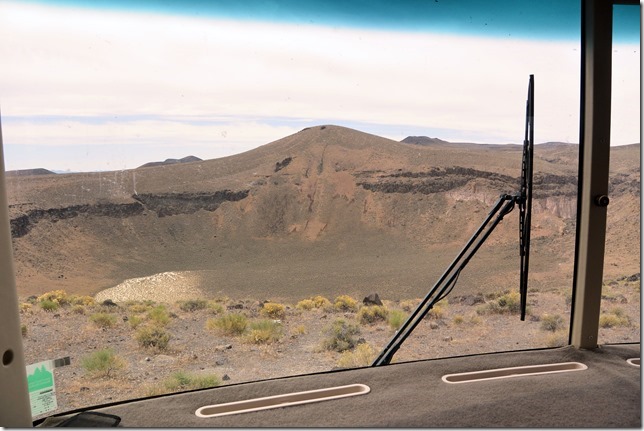
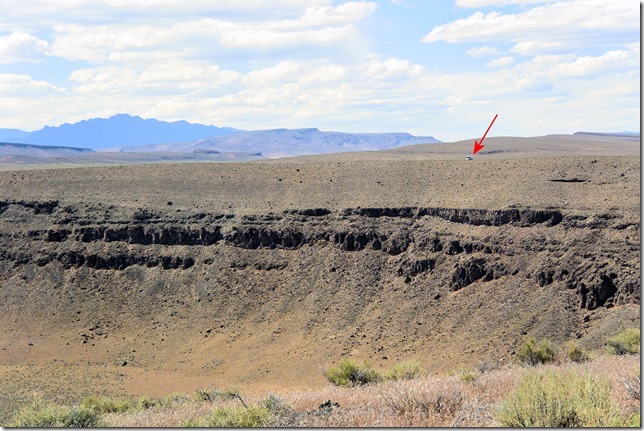
Lunar Crater was named somewhat emotionally, I think. Geologists believe that this crater was not formed by meteorite impact, as were the Moon’s craters. It also is not of classic volcanic origin, like a typical cinder-cone volcano. Lunar Crater was formed by a bulge of magma that came in contact with a subterranean aquifer. The magma “moved in” fast enough that the aquifer turned quickly to steam – – – and blew out a pretty big chunk of earth, scattering it fairly uniformly about the surrounding area.
Traditional cinder cones are also scattered all about, and a drive through the area produces views of all kinds of these cup-shaped hill-tops. There is also a dry lake which provides easy driving while sight-seeing.

Sometimes, lava flows occur on top of old sedimentary layers. Then you get some erosion and eventually you come up with The Wall.
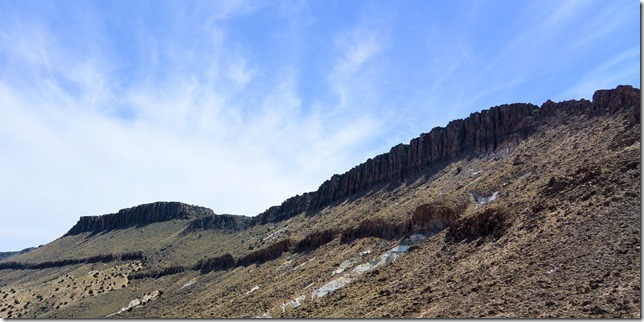
Cinder cones can blow volcanic material sky-high, or they can ooze it out in a long, continuous flow. One of the cones did exactly that, and created many square miles of sharp, jagged A’a type lava. Here’s an edge-on view of the flow below the cone. The arrow shows the side of the cone that collapsed and spilled out all the foreground lava.
This lava field is the sharpest, most brittle rock you might ever encounter. As it flowed, it bunched and bulged and twisted into grotesque shapes. Now, as wind and weather blow dirt and seeds across the lava-scape, a tiny city exists of small animals that feed and nest among the fantastic assortment of pinnacles and cavities.
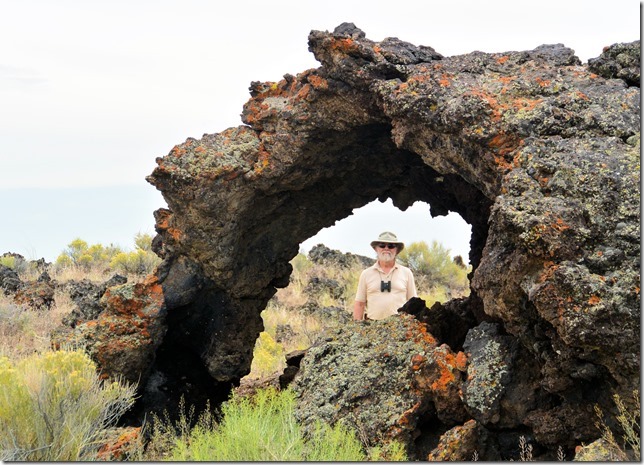
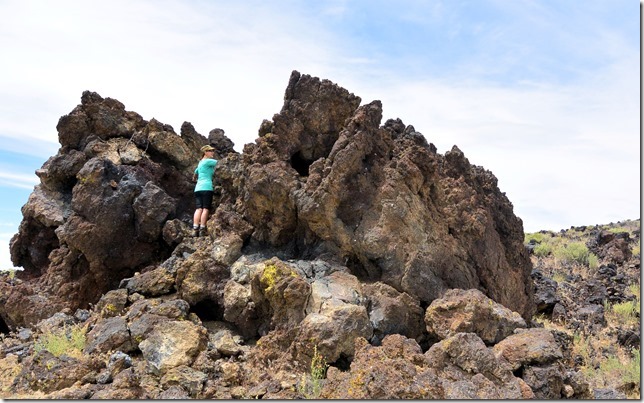
Some of the flow areas look like they just cooled off yesterday. Very little vegetation growing there yet.
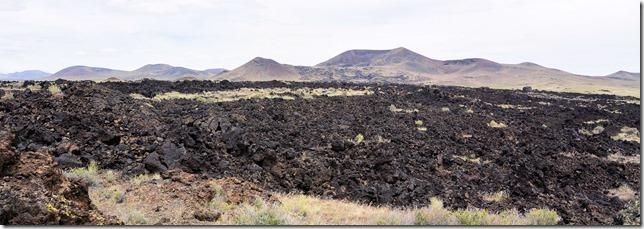
The rock is amazingly harsh. It’s not hard to imagine wearing out a set of boots in a few days, or a set of tires (if you dared to attempt it) in a few hours. Some of the terrain (on top) is walk-able, but most is a hard scramble across razor-sharp stone.
All this is to be had at the end of a six-mile dirt road with some of the worst wash-board we’ve ever seen. Fortunately, it’s straight, and if you have the temerity to kick your speed up to 50-60mph, you can dance across the wash-board with a minimum of bone-rattling. Raises a cloud of dust than can probably be seen for 50 miles. But there is nobody around to see it.
Running out of time, we could only stay for a day. Beautiful, bleak, quiet, vast – – sorry to have to leave.

Comments
A Precipice and a Black Tsunami — No Comments
HTML tags allowed in your comment: <a href="" title=""> <abbr title=""> <acronym title=""> <b> <blockquote cite=""> <cite> <code> <del datetime=""> <em> <i> <q cite=""> <s> <strike> <strong>